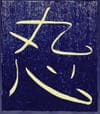I’m not a fan of rigid. codified, systems especially for movement. I may just be echoing Bruce Lee's idea of “Absorb what is useful, discard what is useless, and add what is uniquely your own,” but that concept is worth remembering and applying beyond the martial arts. Because systems are packages of knowledge that the creator(s) found worked for themselves and those they taught. Systems can be wonderful pathways towards mastery when they work for you, but you can just as easily get stuck in them, unaware of the knowledge and experience you're missing out on by not exploring beyond their bounds. After all, you're a unique individual and it's up to you to find what moves you. With access to the internet and global connectivity we have unfettered access to immense knowledge. With that access comes the ability to explore just about any movement art, seek out communities, and discover what works for you and what doesn't.
From my experience it isn't the what portion of any given art or system that matters, but instead the approach each has to movement, and whether (or how much) that approach aligns with your own. Why is this important? Well, first, if you find a system that suits you then by all means, stick with it. At the same time I encourage you to experiment with other arts to see how it can improve your main focus. If there’s anything that has become increasingly clear to me, it’s that everything is connected. While we can codify a system with a set of movements, nothing makes it so distinct an art that you can’t draw parallels and find links in other movement arts.
For fun and to provide more concrete visuals here are a couple recent examples I've noticed in my own practice of connections between arts:
- The Thai kick, a powerful sweeping kick aimed at the thighs is best executed with ballet-esque posture. The standing leg is straight, with the foot turned out as maximally to open the hip, and as the kick begins the whole body is held tall and open, from kicking leg to the head.
- Watching a Martha Graham style modern dance piece I saw lots of circus style acrobatic lifts.
- Belly dancing's standing posture resembles that of many of the Chinese internal martial arts: knees bent, tailbone tucked, and upper body kept relaxed and stacked on the hips.
Thus for myself I've become less and less interested in picking a system or defining myself as any one type of movement artist (a traceur, a ninja, a modern dancer, a t'ai chi practitioner, a climber, circus performer, yogi, etc.) the more time I spend learning about movement. Instead the new approach I find myself attracted to is simple: improving my physical intelligence. I do have several core practices that I maintain, those that align best with my preferences and philosophy, but I'm now remaining open to learning movement from anywhere. In the past I'd rejected learning from gymnastics or ballet, yet now I'm exploring both and finding that they're improving my body awareness and control, in addition to proving useful to my parkour, martial arts, and other dance practices (the non-ballet styles). Exposure to different viewpoints and ways of moving keeps you open to breakthroughs, improves your movement vocabulary, and often can deepen your core practice(s).
And we're back to Bruce Lee's idea again, craft your own approach to movement: "Absorb what is useful, discard what is useless, and add what is uniquely your own."
